Victor Mikhailovich Glushkov. Ahead of time
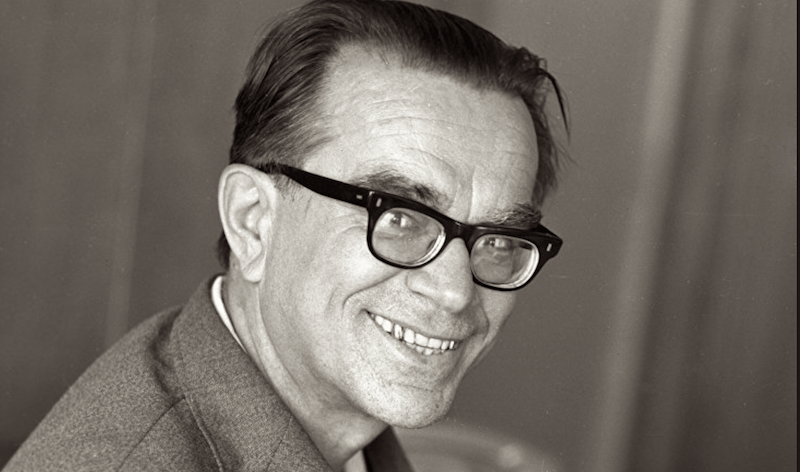
One of the most brilliant, talented and outstanding people of the 20th century, a scientist and thinker who has the right to stand next to such personalities as Einstein, Turing, "the king of Soviet cybernetics" - Glushkov Viktor Mikhailovich. Today we will talk about this great man, who was an inexhaustible well of ideas, the creator of the scientific and technical foundations for the information industry of the USSR.
The story of his life is amazing, he was the one who stood a step away from the discovery of the world wide web. From under his pen out more than 800 works. The first in the world "Encyclopedia of Cybernetics" was prepared on the initiative of Glushkov. His talent - to look deeper and further, opened before him an understanding of how important an important role in the life of society would be played by computer technology, he was clearly aware of the prospects and the large scale of its use. Already at that time, the idea of creating artificial intelligence did not leave him. Mathematics, cybernetics, computer construction, computer science ... all this can be safely connected with the name of Viktor Mikhailovich. A talented person is talented in everything!
In 1923, Viktor Mikhailovich Glushkov was born in Rostov-on-Don. Father - Glushkov Mikhail Ivanovich, mining engineer with a higher education from the old Cossack family (stanitsa Luganskaya). His ancestors were strong-willed and talented people, all this was inherited and Victor.
')
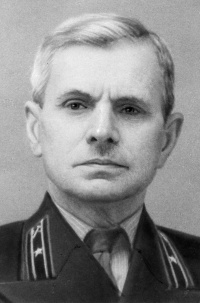
Father - Glushkov Mikhail Ivanovich
In 1928, the family moved to the largest and deepest mine in the Donbas named after Artem (the city of Shakhty) by the nature of his father’s activities. Here in the city of Shakhty (Rostov region) he spent his childhood, graduated from school. Parents paid a lot of attention to the education of his son, from the memories of Glushkov himself - his father often helped him conduct experiments in physics and chemistry, and even designed a TV set together. Glushkov Sr. was an ardent radio amateur; he made radios, batteries, and added a son to this business.

town of Shakhty
Victor in the 5th grade was able to independently, with the help of the popular science magazines “Technique of Youth”, “Knowledge and Strength”, make a radio receiver and, what is most interesting, even came up with their own schemes for this. As Glushkov recalled, it was at that time that he managed to create his first invention, an aiming device, a projectile flight control system for an electric gun.
Already at a young age, Victor perceived the book not only as a tool to extract knowledge, but read it under the already defined and stated task. This principle Glushkov adhered to his whole life.
The book was an integral part of the life of the Glushkov family, before the war the real library was located in the house, at four years old he could read, Jules Verne's novels captured him, he was fond of biology, mineralogy, the book of Brehm by the German zoologist and traveler scientist (Brehms Tierleben ") They were not only read to them, but also seemed to be learned by heart).
I learned to read very early. My paternal grandmother, Efimia Petrovna, when she was waiting for the birth of her grandson, learned to read and read to me books. My father painted pictures for me with poems. Apparently, then I learned to read. Before school, I had already read Wales, Jules Verne, and other science fiction literature, but I still didn’t have any pronounced inclinations at that time.
While still at school, Glushkov independently studied astronomy, mathematics, physics, chemistry and knew these subjects at the level of the university program, an incredible number of poems, poems, and not only in Russian, were easily recited by Viktor. In the tenth grade, Glushkov recited verses for 10 hours in a row. Goethe was his favorite poet, and the legend of Faust, with its deep philosophy and Faust’s desire to know the world, was his favorite work and hero, respectively: “I liked Faust very much, because the Romantic of knowledge was revealed in his image, which for me was the most important ". But such a fascination with reading at an early age worsened Victor's vision, he suffered from myopia until the end of his life. He was a physically rather poorly developed child, but Victor decided to correct this, persistently doing physical exercises by the 10th grade showed good results: he was engaged in boxing, football and volleyball, loved jumping into the water, jumped from ten and eight meters high, jumped high.
Being in the sixth grade, the future scientist, having decided that there was not enough knowledge for his stated tasks of mathematical knowledge, he began to study the textbook on differential calculus and Privalov's Analytical Geometry; algebra, geometry, trigonometry - until the eighth grade, he calmly decided all the examples from the problem book of Gunther and Kuzmin, which were designed not even for schoolchildren, but for university students.
Mother, Vera Lvovna Glushkova, worked as an accountant, and devoted a lot of time and attention to her only son, whom she loved immensely. Alas, the tragic fate befell this wonderful woman: during the Second World War, she was executed by the Nazis, and together with other members of the anti-fascist underground, she was dumped into the mine.

Mother - Vera Lvovna Glushkova
During the war, she was a deputy of the Shakhtinskaya City Council, she was issued by the house manager, who was German. It was a terrible time, in just a couple of months the fascists managed to shoot three and a half thousand people. Mother's death was a big blow to Victor, each time, arriving in his hometown of Shakhty, he went to the memorial, laid flowers, thus recalling the great feat of his mother, whose memory he sacredly honored. After the death of his mother, his father married another woman, who already had two children, moved away from Victor, and at the end of his life worked as a director of a technical school in the city of Shakhty. Although Glushkov Jr. did not forget his father and helped him financially, despite the fact that they met very rarely.
Understandably, with such a burden to the sciences, Glushkov was still a high school student at school, receiving the highest score for his work.
As a child, he was interested in astronomy, but due to poor vision (-12), this passion remained in childhood. It seemed that Victor wanted to know everything, even interested in hypnosis. He managed to make a model of a tram controlled by a short-wave transmitter, later - a searchlight and a home telephone, and he made a magnifier on the camera “Photocor”.
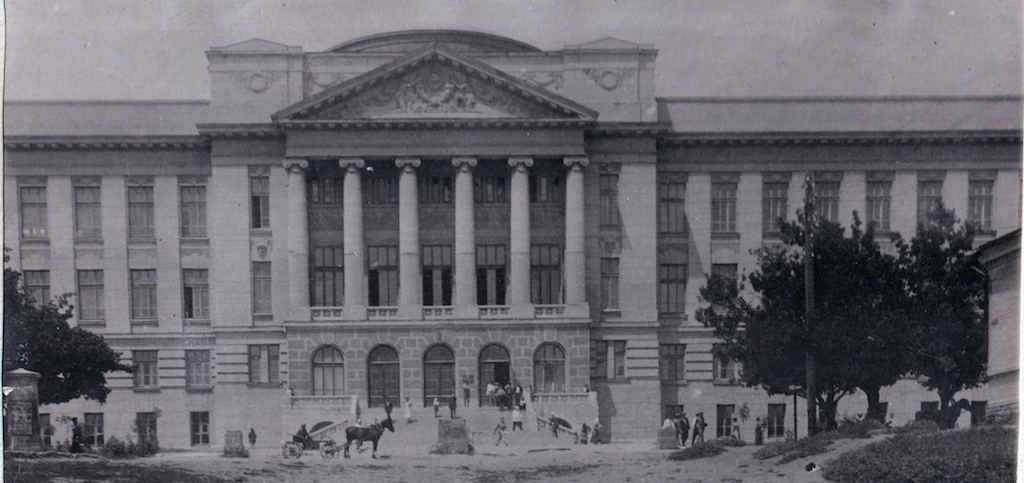
Novocherkassk Industrial Institute 1936
In 1941 he graduated from school with a gold medal. His dream was to become a theoretical physicist. And then the Great Patriotic War began ... about which Victor heard from a radio assembled with his own hands. His studies at the Novocherkassk Industrial Institute at the Thermal Engineering Faculty were postponed, he entered here only in 1944 (successfully completed in 1948), and studying at Moscow State University, as the survivor of the occupation, was forbidden: “It was only in December that I was given a passport in the military registration and enlistment office . At first, I decided to go to Moscow. However, having arrived there, I realized that this was a hopeless matter — they did not take visitors to the university. I had to go back. ” During the war, Victor applied to the art school, but did not take it. Victor entered the correspondence form of study at the Faculty of Mathematics at Rostov University.
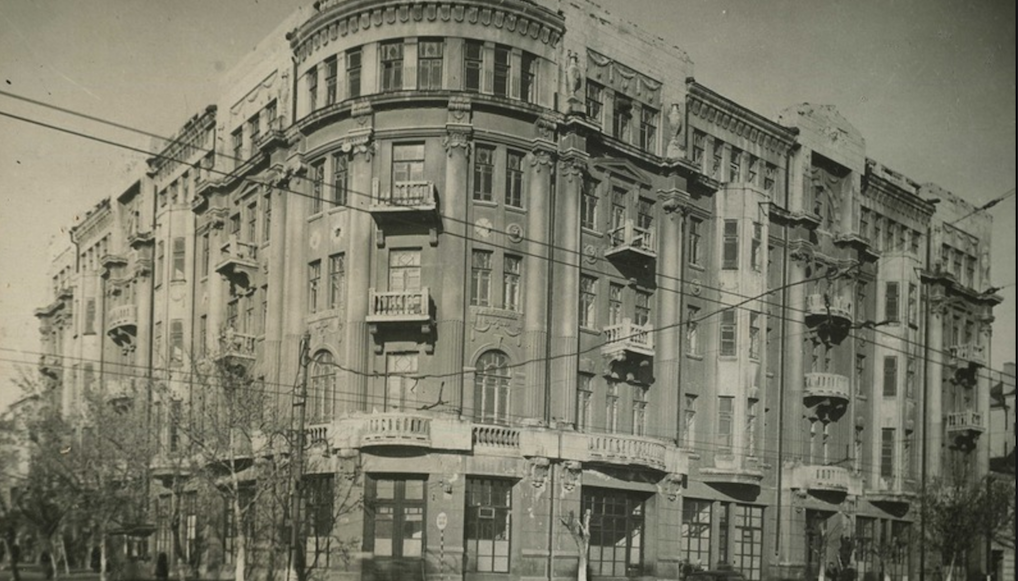
The main building of Rostov State University
In parallel with his studies, he worked to provide himself with housing and food. He graduated from university in just a year, and at that very moment he became interested in such an abstract area of mathematics as topological algebra! and first solved the generalized fifth problem of Hilbert. In his thesis, Glushkov developed methods for calculating tables of improper integrals, finding inaccuracies in existing tables that had survived from 10 to 12 editions. At that time, the nuclear industry was in its infancy, and Victor, as a young specialist, was sent to the Urals.
While studying at the third year of industrial institute, Glushkov met his future wife, she studied at the Faculty of Energy.

Soon they were married, for Vali (the wife) Glushkov became the measure of everything. They went to the Urals together, Glushkov got a job as an assistant at the Forestry Institute at three-fourths rates. His wife settled in Sverdlovenergo. Glushkov's wife was a green-eyed beauty, an intelligent, educated and energetic woman. She solved all domestic problems, thereby giving Victor the opportunity to fully pursue science. Working at Sverdloenergo, Valentina earned a lot of money, she had a company car with a driver at her disposal. When Glushkov was offered a job in Kiev, this strong woman gave up her career, devoting herself to her husband and raising children, and worked as a teacher at the Kiev Institute of Food Industry. She provided invaluable support to Glushkov, their love was carried through the year, and according to the children, they perfectly complemented each other, being two halves of one whole - the family in which comfort and warmth reigned.
A year later, Victor was already working as a senior teacher. By the beginning of 1951, Glushkov completed work on his thesis "The theory of torsion-free locally nilpotent groups with the condition of breaking certain chains of a subgroup." In the same year he was awarded the academic degree of candidate of physical and mathematical sciences, he was appointed assistant professor. Work has begun on a doctoral thesis.
As mentioned earlier, he became interested in the world mathematical congress of 1900, at which the mathematician Hilbert was given 23 of the most difficult problems of mathematics, the solution of each of which became just a sensation. After painstaking brain work, Glushkov decided to solve the generalized fifth problem of Hilbert, after which he became a recognized young scientist, one of the first mathematicians of the USSR of that time. But at that moment he was already seriously carried away by cybernetics and computer technology, which became his passion for his whole life.
"... I came up with an idea to justify the solution of the generalized problem of Hilbert ... I wrote everything down, and then worked it out for another six months. It turned out pages 60. And it was just a proof of one theorem. This work brought me fame among mathematicians and a sense of creativity or something happiness. "
After defending his doctoral dissertation in March 1955, Glushkov was invited to Kiev, where Glushkov soon became head of the laboratory of computer technology at the Institute of Mathematics (the first computer laboratory in continental Europe). Since 1956, he taught higher algebra, a special course on the theory of digital automata at KSU at the Faculty of Mechanics and Mathematics. In December 1957, the Computing Center of the Academy of Sciences of the Ukrainian SSR was established on the basis of the laboratory; Glushkov became the director. In December 1962, Glushkov headed the Institute of Cybernetics of the Ukrainian SSR Academy of Sciences.

From 1956 he also taught at KSU, where he taught a course in higher algebra and a special course on the theory of digital automatons at the Faculty of Mechanics and Mathematics.
In 1956, already at that time in the Kiev Institute of Mathematics of the Ukrainian Academy of Sciences, preparations began for the creation of a new electronic computer, later it was given the name "Kiev", which would be used to control technological processes. Initially, the development was carried out under the leadership of Gnedenko, but in the final stages was transferred to Glushkov, he participated in the assembly, adjustment of the machine.
In 1960, with the help of a computer, for the first time in the world, experiments were conducted on the control of technological processes at a distance using telegraph lines of communication.
The Kiev computer was supposed to become a kind of know-how in the computer technology of the USSR: to have asynchronous control, ferrite memory, input-output numbers in the decimal number system, external memory on magnetic drums, and a developed system of operations.
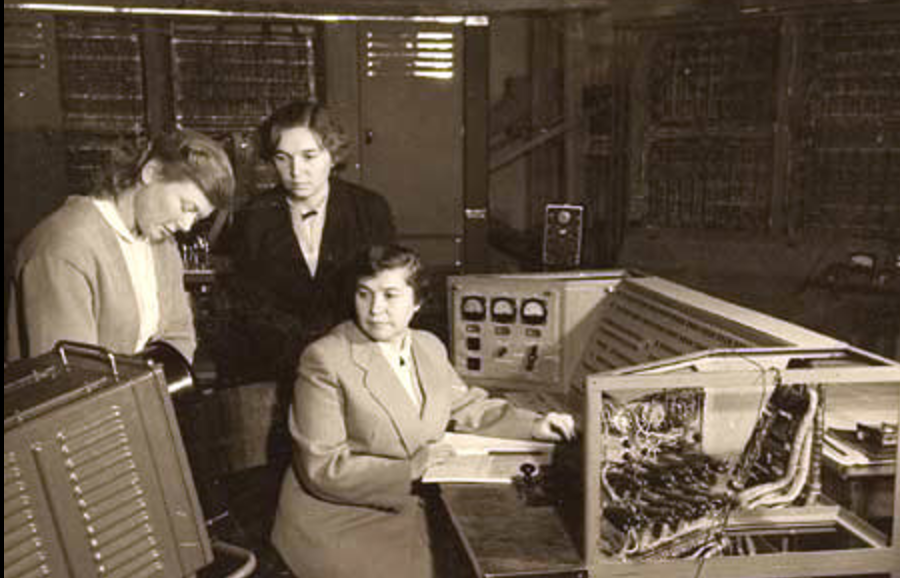
Computer "Kiev"
The computer was characterized by a three-address command structure and a binary number system, the speed was 10,000 operations per second. Data was entered using punched tapes, punched cards, telegraph lines, converters of continuous quantities into discrete, chart reading devices. Power consumption "Kiev" was 25 kW and weighed such a machine neither more nor less - 3 tons. The Kiev computer was the first in Europe digital image processing and intellectual process modeling systems.
Understanding the principles of computer constructions, Glushkov decided to turn the design of computers from art into science. At that time, the computer-aided design theory was not developed, Victor undertook to work on this problem, and soon he organized a seminar on the theory of automata, which addressed the design of the Kiev computer. Glushkov managed to find a simpler and more logically clear concept for the Klini automaton, and he obtained all the results of Kleene. Glushkov theory was aimed at the real problems of designing machines. The automaton theory Glushkov considered his main work of that period, he wanted to study everything related to the new direction of his activity, and preferably as soon as possible! because he worked 18-20 hours a day, forgetting about sleep and food. Of course, such loads did not take a long time to wait - Glushkov went to the hospital.
As his wife recalled, he always had a note on his desk under the glass - “Today is the first day of your remaining life. Don't waste your time. ”
In 1961, Glushkov's work “The Synthesis of Digital Automata” was published, in 1964 she was awarded the Lenin Prize, the monograph “Introduction to Cybernetics”, the theoretical article “Abstract Automata Theory”, which became the basis for many works on automata theory, saw the light.
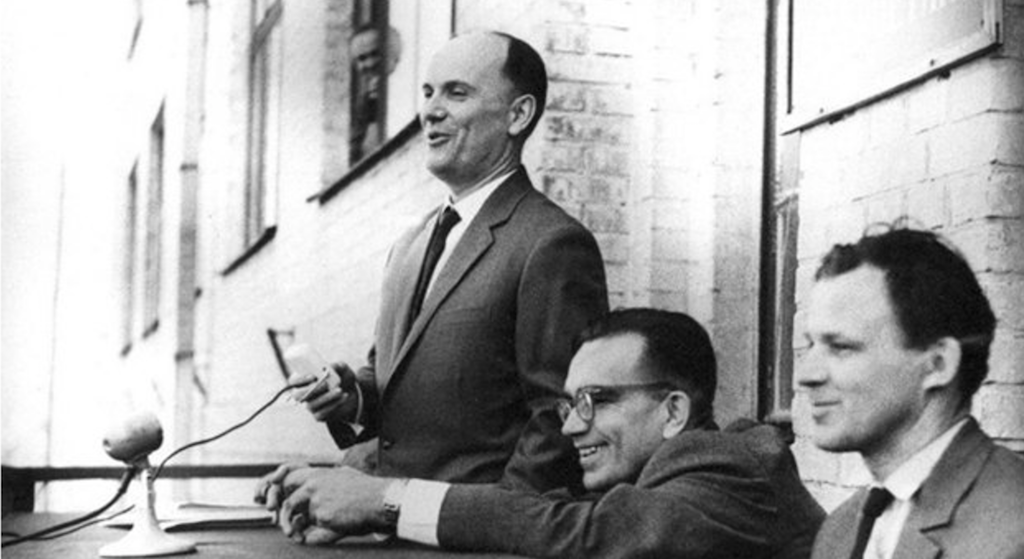
At the rally on the occasion of the award of V.M. Glushkov Lenin Prize
Glushkov was appointed supervisor in a project to develop a computer "Dnepr", Malinovsky - chief designer. The work was completed in record time, from the moment of the creation of the universal control machine UMShN in 1958 to the time of its commissioning in 1961. At that time - it was a world record in the speed of development. In addition to this record, the Dnepr machine set another world record - industrial production, since it was produced for 10 years, exported to other socialist countries.

Computer "Dnepr"
"Dnepr" was the first semiconductor machine of domestic production with a two-address command structure and a binary number system, the speed of operations on addition, subtraction, logical operations was 35 thousand operations per second, memory on ferrite cores, with a capacity of 512 words; Data was entered using punched tapes through a device based on the STA-2M telegraph device. The machine was powered from a three-phase AC network 220/380 V, 50 Hz.
In 1958, at the Institute of Cybernetics of the Ukrainian Academy of Sciences under the leadership of Glushkov, work began on the development of the predecessors of personal computers - the Promin computer, later the MIR machine family.
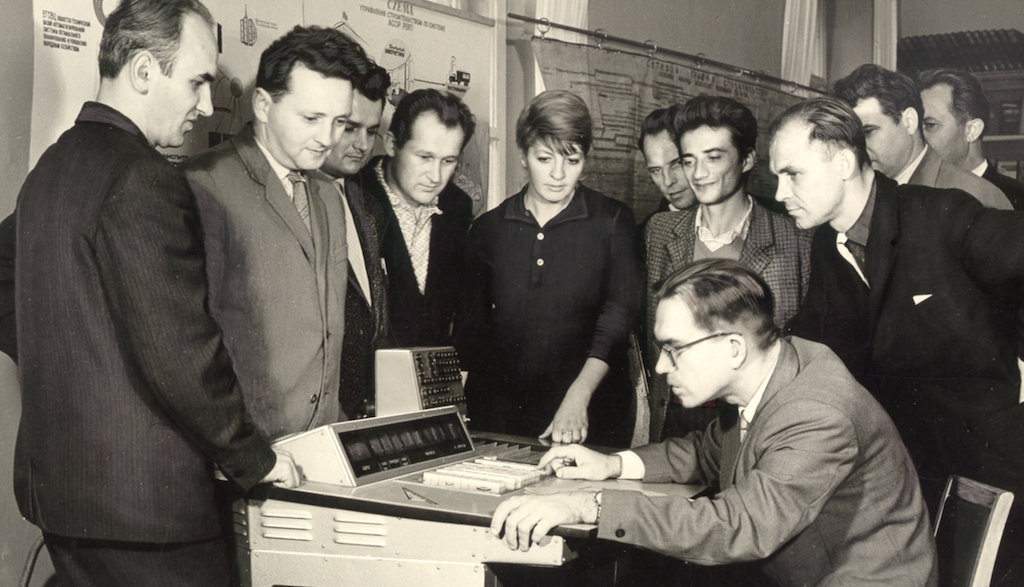
"Promin"
In the computer "Promіn" was implemented a number of innovations. The computer was designed to automate engineering calculations of average complexity in design bureaus and research institutes. It is characterized by ease of operation, small size, low energy consumption.

The speed and memory were smaller, when added, the speed was 1000 operations per second. "Promin" with a unicast command structure and a decimal number system was built on semiconductor devices. The machine entered serial production in 1963. The principle of stepwise microprogramming was first applied in it.
The MIR computer was also intended for engineering calculations, its dimensions allowed to place it in a small room (16 square meters). Using an electronic typewriter with a wide carriage, the program was entered and the results were output, and the printing speed was 10 characters per second. The speed of a computer when performing arithmetic operations on 5-bit numbers was 200 - 300 operations per second.
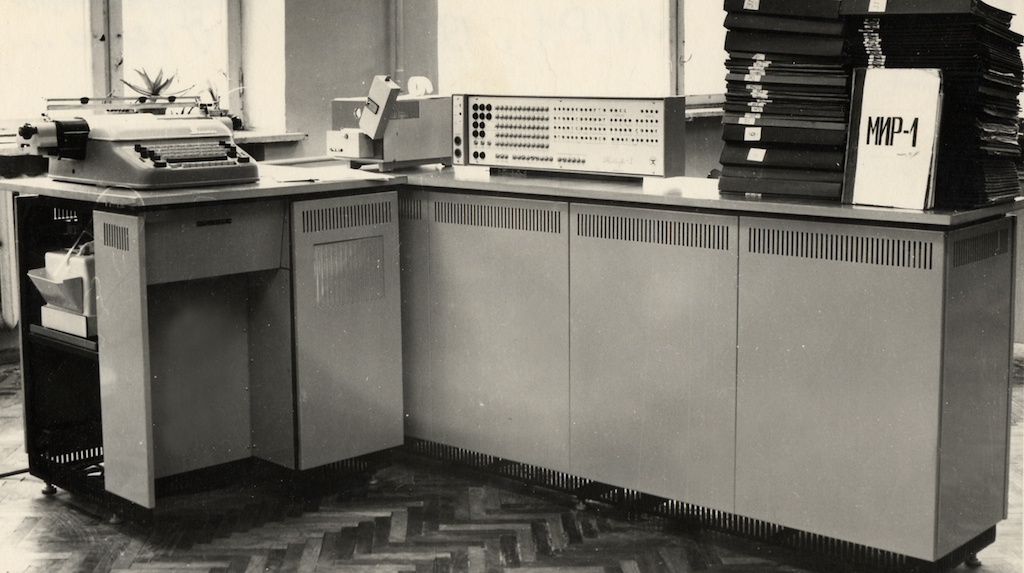
"MIR-1"
When developing the MIR series, Glushkov set himself a new goal - to “bring together” the machine and the person as much as possible by creating a simple programming language. Thus, the input language ALMIR-65 was developed. Later, in the following models of the computer "MIR-2", "MIR-3" ALMIR-65 transformed into the language of the Analyst. In the MIR-2 computer, for the first time, a display with a light pen was used.
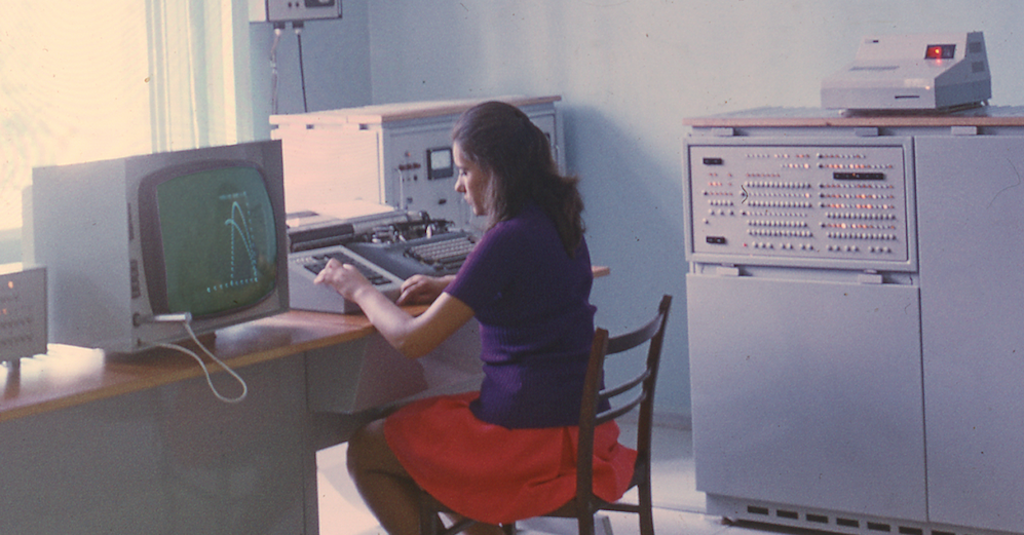
MIR-2

"MIR-3"
At the end of the 60s, work began on the development of the Ukraine computer under the leadership of Viktor Glushkov. Rabinowitz was appointed chief designer. "Ukraine" was the next stage in the development of computer intellectualization.
In 1968, Glushkov was awarded the State Prize of the USSR (as a group of authors) for the development of new principles for constructing structures of small machines for engineering calculations and mathematical software for them embedded in the computers of the MIR series.
One step before the discovery of the world wide web and electronic money
"The future of management is connected with the transition to paperless computer science."
The time has come with the conditional name "Khrushchev thaw", which replaced the totalitarian policies of Stalin. The Stalinist regime, its repressive policies were criticized and condemned.

From 1953 to 1964, many social reforms were carried out, among them - solving the issue of pensions, increasing incomes of the population, solving the housing problem, introducing a five-day week. These were tough times. But in the key of the article we are interested in the economic situation. By the early 60s, the USSR was in a deep economic crisis, caused by the inconsistency of the reforms. In 1962, food prices rose by almost 30%, which caused a wave of indignation. The reasons for the failure were not openly discussed, but for many specialists they were more than clear.
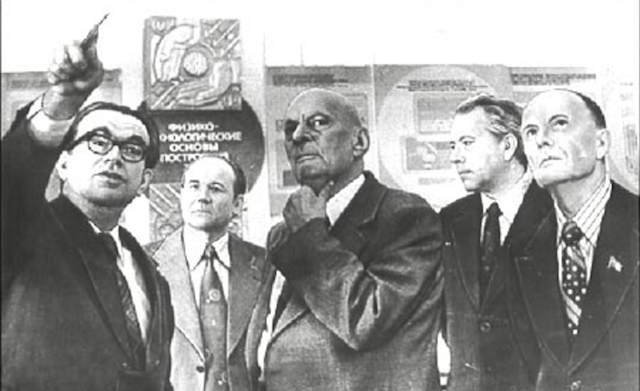
Glushkov proposed to introduce a draft electronic system for analyzing and planning the state economy. Thus, already then making the prerequisite for the appearance in the USSR of electronic money! As Viktor Glushkov argued, the refusal of cash payments would, roughly speaking, allow honest workers to buy more goods for their electronic ruble than speculators for a ruble in cash. But such successful management with the help of machines would be possible provided that only truthful information would be provided about each worker. Such honesty of the initial information, for those who were at the helm of the state was completely unprofitable.

In 1962, Glushkov was given the task of building OGAS (the nationwide state automated system for managing the economy). The first draft of the Unified State Network was developed, which included about 100 centers in large industrial cities connected by broadband communication channels. There were few issues that were related to the protection of information. This was supposed to be a two-tier system in which the main computer centers "... exchange information among themselves not by switching channels and switching messages, as is customary now, broken down into letters, but I suggested connecting these 100 or 200 centers with broadband channels bypassing channel-forming equipment so that information can be copied from a magnetic tape in Vladivostok to a tape in Moscow without any reduction in speed. Then all protocols are greatly simplified and the network acquires new properties. "


the automation process was perceived in this way
Before that, such a system was not implemented anywhere, and the project itself until 1977 remained secret. Glushkov developed a system of mathematical models for managing the economy, which made it possible to see regular flows of information, and they were also offered a cash-free system. By approximate calculations of Glushkov, the OGAS project could have been completed in 15 years, it would have cost 20 billion rubles. By embracing industry, agriculture, trade, the ministries of the project would have paid off completely. It was also necessary to train personnel, to release a number of computers, to create and organize computer centers. According to Glushkov, if such a project was implemented, the profit would have amounted to 100 billion rubles. As Glushkov said, OGAS is much more complicated and more difficult than the programs of space and nuclear research combined, plus the whole scientist understood that such a system would not leave aside the political and public aspects of the life of society. But ... the idea was rejected. OGAS could challenge the West, where it was clearly understood that the implementation of such a system could develop a modern and efficient economy. , , , , . 20 , .
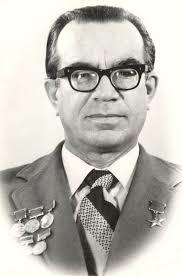
( 1964 ) , . , 60 -70 «» . , , , . , , .
70 . -2701 -1766, .
, , . , , , , , , . - .
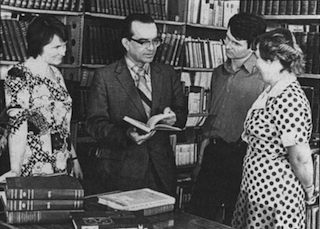
, , , , , . , , , , ) : "… , ."

, , , . .
1981 , , . . . 7 1982 , , — , .

30 1982 . , IBM , , , . , .
. . .
- ua-hosting.company. , , :
VPS (KVM) c ( $29) 1-3 + 1 geektimes
Do not forget that your orders and support (cooperation with you) will allow you to publish in the future even more interesting material. We would appreciate your feedback and criticism and possible orders. ua-hosting.company - happy to make you happier.
Source: https://habr.com/ru/post/370259/
All Articles